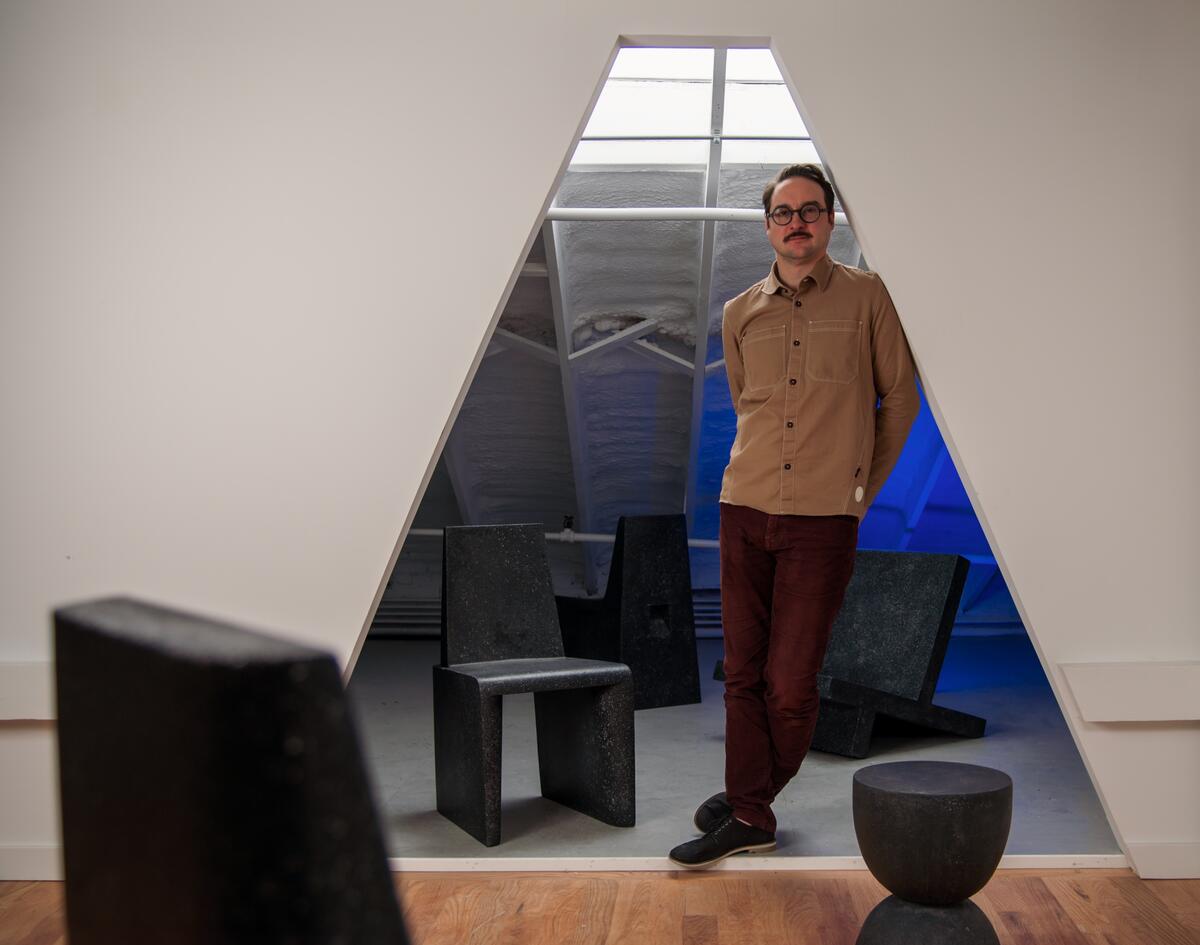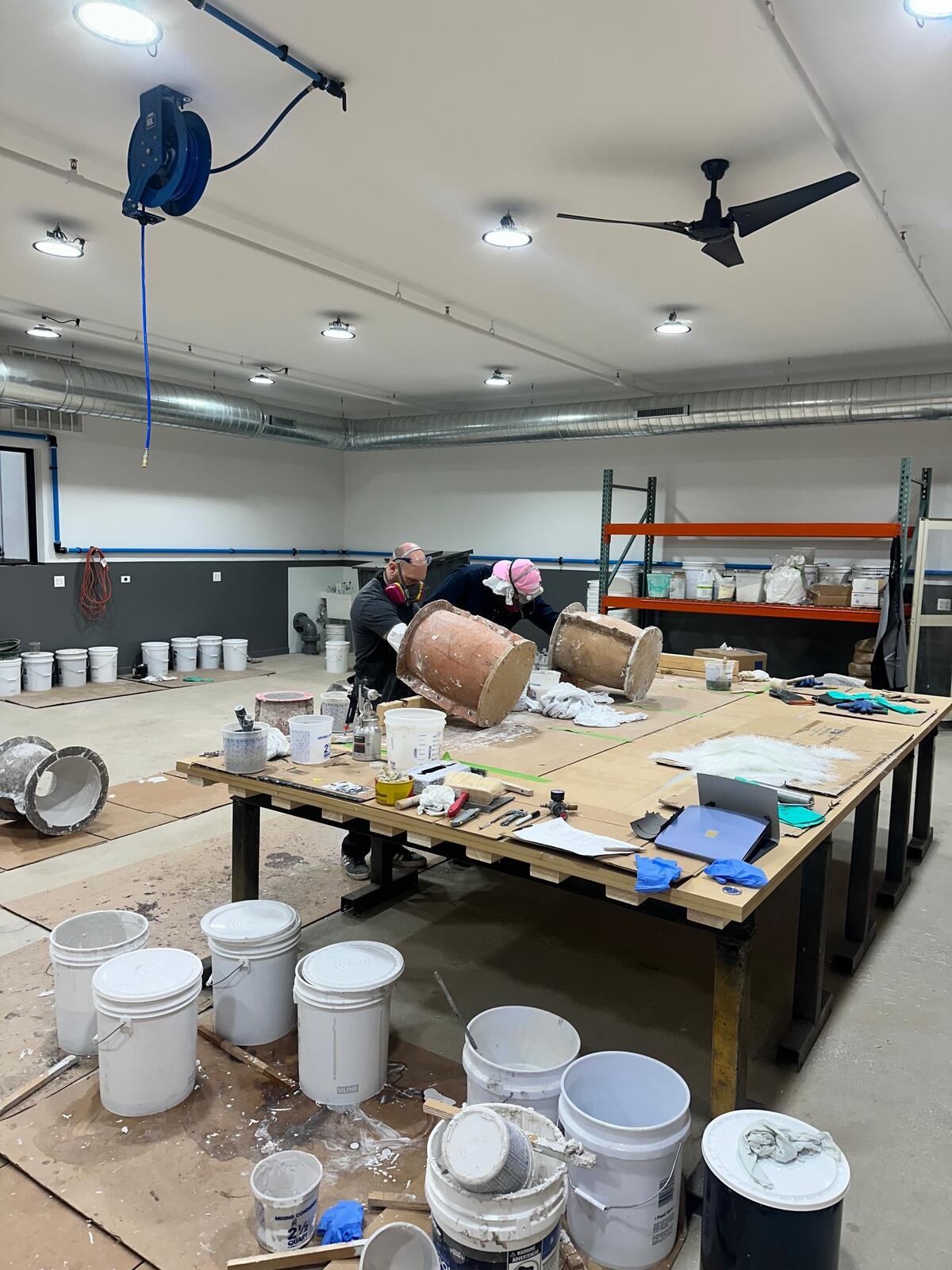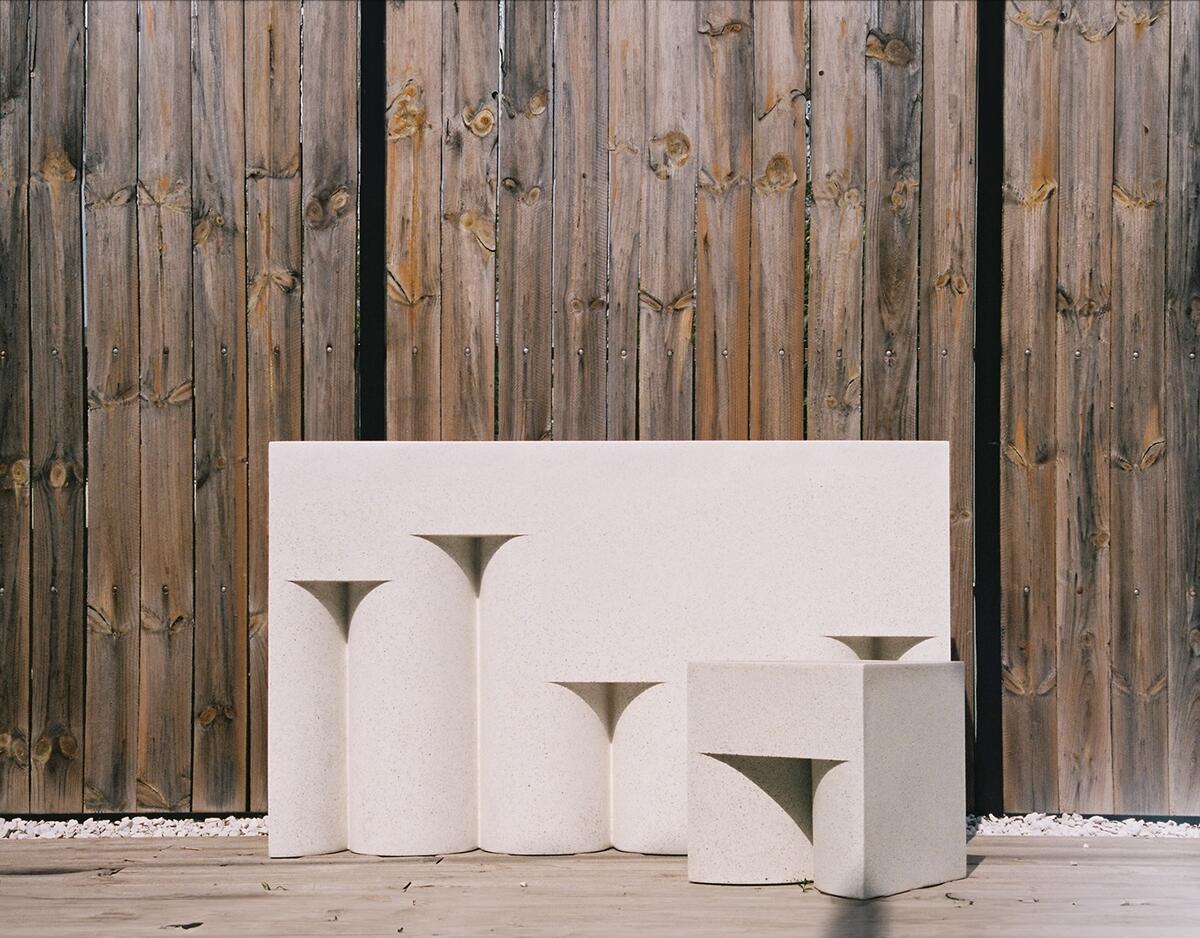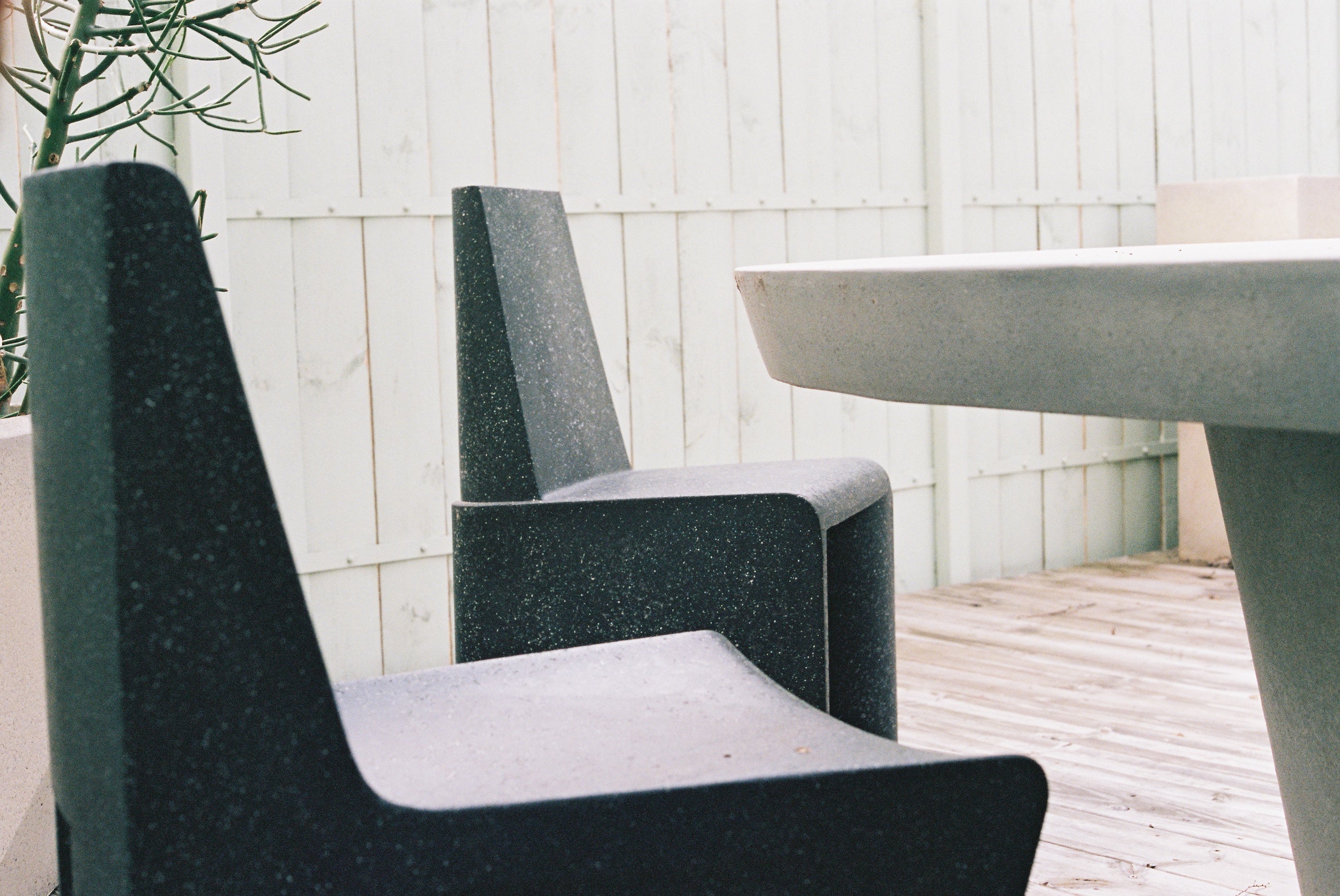Zac Bitner likes to use the element of surprise in his work. The Chicago-based maker finds his passion in creating experimental pieces that aren’t quite what they seem. “You don’t really know what it is until you interact with it, and you’re pleasantly surprised,” he tells Business of Home. “That’s the kind of thread that I’ve tried to draw through everything in the company.”

Bitner got his formal design start at the Savannah College of Art and Design, and after graduating in 2002 with a degree in furniture design, he found himself working for a 100-year-old company that makes fiberglass statues. There, he learned not only the craft but also how to run a business. Halfway through his time as a statue maker, the artisan started to make his own line of chairs and stools on the side, pondering what he wanted his future career to look like. “I realized eventually that I was really intuitive with materials, and I kind of understood a wide variety,” he says. “I’m not an expert in them, but I just seem to work with them very easily, and I liked to experiment with a lot of different stuff and resins and more experimental things.”
He launched his brand, Zachary A., in 2009 at the AD Design Show, and left his day job in 2014 after receiving a large order for the Virgin Hotel rooftop cocktail lounge in Chicago.
The artisan is known for stone pieces that look like concrete, but are extremely lightweight. “When I brought them to people at a trade show, or even little rinky-dink shows when I was starting out, everybody was super shocked and surprised,” he says. “It lit them up, so I was like, Oh, this makes me feel good.”

Bitner’s design process begins with lots of parameters: What type of chair? Who is this for? Where is this room? The material he uses can be cast into anything, so he has narrowed his focus based on the manufacturing process and aesthetics. For each new piece, he makes an original model, molds it and then casts it. “If that’s wrong, we have to do all that process over again,” he says. “Whereas a guy making a [wooden] table can just make another table. They don’t have to burn the mold cost or anything.”
He uses an aggregate of stone, resin and fiberglass that looks like chunky concrete but is remarkably light, and it’s durable—versatile for both indoor and outdoor use. His goal is to create unique shapes and forms that are easy to pick up and also comfortable. He accomplishes the latter by making sure the seats have curves that fit people’s backs (he doesn’t sell cushions). “If you make something that everybody else has made already, nobody’s going to want it,” he says. “The path of least resistance is kind of a thing I like to think about a lot. If the piece is already made, it’s not worth it. Make something brand new.”
The Brow collection is Bitner’s current personal favorite because of its shadows. The pieces were inspired by an old Charles and Ray Eames advertisement that read “highbrow,” “middlebrow” and “lowbrow,” featuring heads with large, medium, and tiny eyebrows. “It’s reminiscent of a face or a brow, but it also looks like a butt or crotch or something. It’s kind of funny with the shadows, and they provide a place to lift [the piece from.]”

The company recently opened its own 12,000-square-foot manufacturing plant in Chicago to allow more control and reduce lead times, and has plans for a new collection called Polli, a collaboration with designer Karim Rashid that will debut at the upcoming ICFF and HD Expo. Inspired by tadpoles, the hospitality-grade modular stools create meandering patterns and can easily be produced in multiples.
With all this recent growth, Bitner never wants to lose sight of what inspired him in the first place: creating new and unpredictable pieces. “I want the stone line to help us subsidize some of our more artistic experiments,” he says. “To be able to do that so well that we have enough resources left to crank out some new, good art that we’re really confident about—that would be ideal. That’s what’s fun.”
If you want to learn more about Zac Bitner and Zachary A., visit their website and Instagram.





























